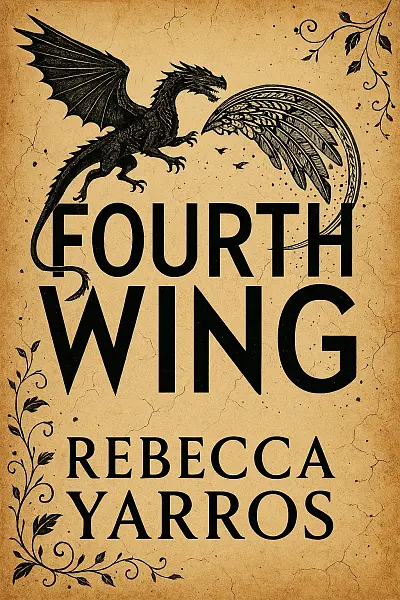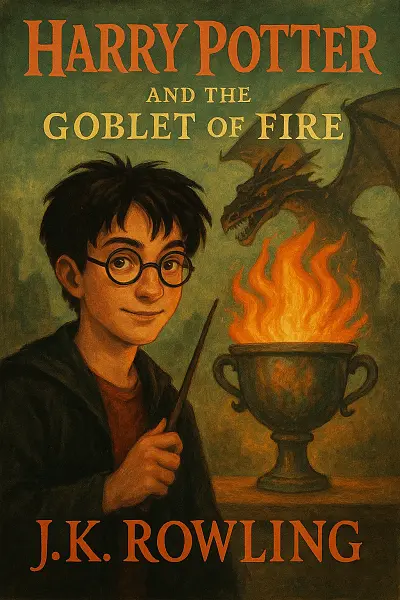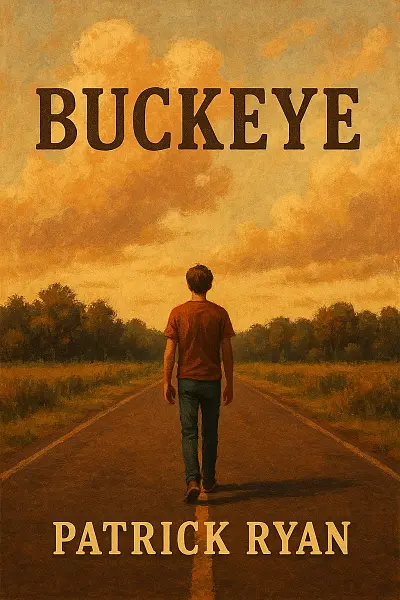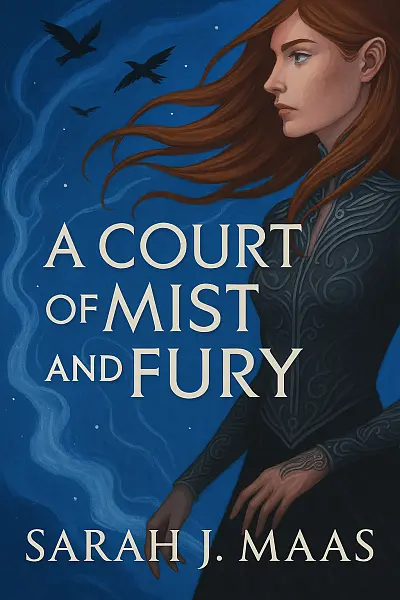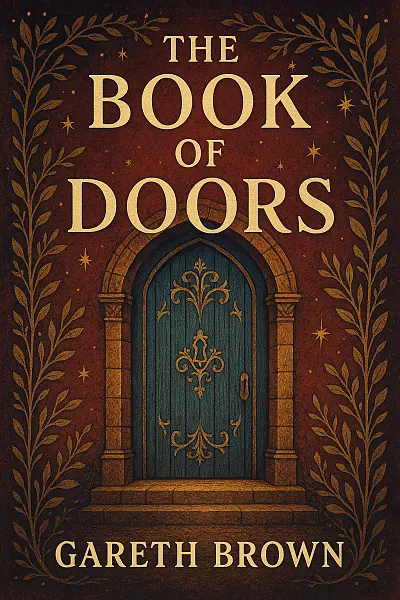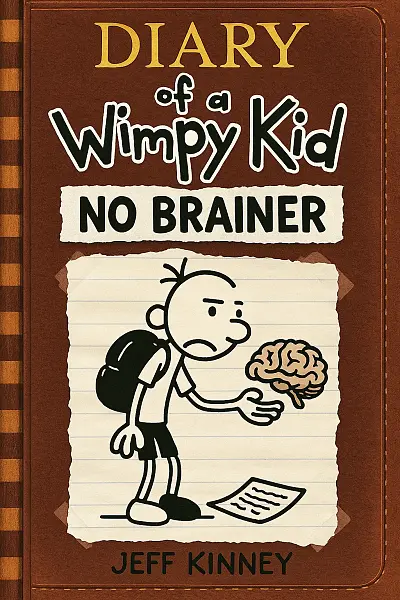
Diary of a Wimpy Kid: No Brainer
by: Jeff Kinney
Greg Heffley is cruising through middle school life, not exactly loving it, but not hating it either. Everything changes when the town threatens to shut down his run-down school, tossing Greg’s routine upside down. At first, he’s not too bothered—until he realizes this could mean being separated from his best friend, Rowley. Suddenly, saving the school becomes Greg’s mission, but he and his classmates are up against huge odds and a ticking clock.
Told in Jeff Kinney's signature witty, diary-style narration, the story captures those classic, awkward-funny middle school moments and leaves us wondering—can Greg actually make a difference?
"“Sometimes the hardest tests aren’t on paper—they’re the ones that show you who you really are.”"
Literary Analysis
Writing Style
Atmosphere
- Expect a breezy, lighthearted vibe that’s dripping with school-age chaos
- The tone is endearingly sarcastic with a steady undercurrent of awkward humor
- Middle school halls come alive—cringey, energetic, and occasionally mortifying
- There’s zero gloom here; everything feels accessible, relatable, and just the right amount of zany
Prose Style
- Super conversational, almost like listening in on a friend recounting their day
- Sentences are snappy, ultra-short, and packed with jokes and asides
- Simple vocabulary—never pretentious, always direct, relying on wit over flourish
- The signature doodles blend seamlessly with text, breaking the fourth wall and layering in extra laughs
- Dialogue is casual and realistic, landing the awkward cadence of pre-teen speech
Pacing
- Lightning-fast—think quick bursts of storytelling, rarely slowing down
- Each vignette is tightly focused and usually ends with a punchline or cringe-worthy twist
- Smooth scene transitions keep the momentum up, rarely lingering on any one moment
- Perfect for readers who like to fly through chapters and never get bogged down in detail
Mood & Feel
- Playful and mischievous, with an ever-present sense of “Oh no, what’s going to happen next?”
- A persistent underdog energy; awkwardness and self-deprecation are celebrated, not shamed
- Nostalgic if you’ve survived middle school, but sharp enough to amuse readers of any age
- The blend of text and illustration creates a diary you don’t just read, but hang out with and laugh along
Overall Rhythm
- Picture a rollercoaster of mishaps with barely a pause between laughs
- Punctuated with comedic timing that dials up both the absurdity and the heart
- Ideal for reluctant readers or anyone seeking a fun escape—the story never outstays its welcome
Key Takeaways
- Greg’s wild “brain freeze” school assembly meltdown — total social disaster!
- Mom’s relentless campaign for “family brain time” sparks sibling sabotage galore
- Seriously laugh-out-loud moments—Kinney’s doodles capture middle school chaos perfectly
- Rowley’s “study buddy” antics: equal parts earnest, awkward, and hilarious
- Standardized test panic turns into a surprisingly sweet team-up with unlikely classmates
- Sharp jabs at school bureaucracy—so spot-on it stings (and cracks you up)
- Classic Kinney blend of cringe and heart as Greg scrambles to outsmart the system
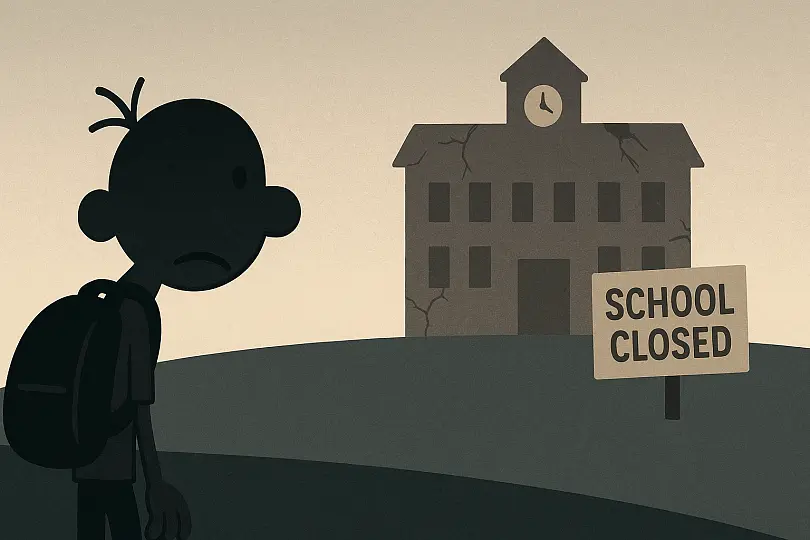
School’s a brain-buster—Greg’s genius is in surviving the chaos!
Reader Insights
Who Should Read This
If you love books that are funny, relatable, and a little bit goofy, then Diary of a Wimpy Kid: No Brainer is totally your vibe. This one’s perfect for middle graders, especially if you’re into graphic novels or books where the illustrations and the story are kinda tangled together. If you ever felt awkward at school, like you didn’t quite fit in, or just enjoy reading about someone else’s hilarious disasters, you’ll probably tear through this in one sitting.
-
Big fans of the Wimpy Kid series (or similar books like Big Nate or Dork Diaries) are absolutely going to eat this up. The humor’s spot on, the drama is low-stakes, and the story flows super fast—seriously, it’s almost impossible to get bored.
-
If you hate reading because long paragraphs and descriptions put you to sleep, this is a winner. The doodles break things up, and the language is super chill and conversational.
-
On the flip side, if you’re an older reader or looking for something with really deep themes or complex characters, this probably isn’t going to blow your mind. People who crave action-packed fantasy or prefer more “serious” or mature books might find this one a little too light and silly.
-
Also, if you’re not a fan of goofy humor or you’re over Greg Heffley’s constant complaining (hey, some people are!), you might want to skip this and try something with a little more emotional punch.
But honestly, if you just want a book that makes you laugh, feels easy to read, and lets you escape into all the cringe-worthy awkwardness of middle school, I can’t recommend this enough. Perfect comfort-read material.
Story Overview
Greg Heffley is back and facing his trickiest challenge yet when his school faces the threat of being shut down, and everyone expects him to help save the day.
With his usual laugh-out-loud perspective, Greg navigates wacky ideas, school politics, and the hilariously unpredictable schemes of his classmates and teachers.
If you’re up for a fresh, clever adventure packed with classic Wimpy Kid humor and big middle school stakes, this newest installment totally delivers!
Main Characters
-
Greg Heffley: The ever-relatable middle schooler and central narrator whose misadventures and anxieties about school, friends, and family are at the heart of the book. Greg’s quick wit and flawed but earnest attempts to fit in drive the humor and emotional core of the story.
-
Rowley Jefferson: Greg's loyal best friend, often the innocent and cheerful counterpoint to Greg’s scheming. Rowley’s unflagging optimism and occasional cluelessness make him both a source of comic relief and a catalyst for Greg’s antics.
-
Susan Heffley: Greg's well-meaning but overzealous mom, who believes strongly in academic achievement and family values. Her high expectations and meddling propel many of Greg’s dilemmas and decisions.
-
Frank Heffley: Greg’s dad, who tries (sometimes clumsily) to teach Greg responsibility and independence. Frank's practical, old-school approach to parenting often clashes with Greg’s wayward tendencies, adding to the family chaos.
-
Manny Heffley: Greg’s precocious little brother, whose unpredictable behavior and special treatment by parents add a dash of frustration (and comedy) to Greg’s life throughout the story.
If You Loved This Book
If Diary of a Wimpy Kid: No Brainer had you grinning, it’s easy to see echoes of Big Nate by Lincoln Peirce—the same middle-school chaos, rapid-fire wit, and everyman hero bumbling through crushes and cringe-worthy mishaps. Both series perfectly capture that awkward but hilarious “why-is-life-like-this?” energy, but while Nate tends to be a bit more mischievous, Greg’s dry humor and self-deprecation give this book its unique flavor.
It also taps into the charm found in Dork Diaries by Rachel Renée Russell, but with a twist—whereas Nikki Maxwell navigates girl drama and glitz, Greg’s adventures skew more toward mundane hilarity, embarrassing family moments, and the existential dread only a school brain-testing week can inspire. Fans of illustrated shenanigans and diary-style confessions will instantly recognize the blend of cringe and comedy.
On screen, there’s a distinct The Middle (TV sitcom) vibe running through No Brainer—the daily disasters, clueless parents, and laugh-out-loud awkwardness feel right at home alongside the Hecks’ suburban misadventures. This book channels that spirit of everyday ridiculousness, making even the smallest moments (like a school project gone awry) feel brilliantly big and relatable.
Expert Review
What if the place you’ve always wanted to escape—the headache-inducing halls of middle school—suddenly vanished? And what if, in that process, you found yourself fighting for something you never thought you’d miss? Diary of a Wimpy Kid: No Brainer turns this classic Kinney scenario inside out, posing surprisingly sharp questions about belonging, nostalgia, and the messy business of growing up together. It asks: If we lose the places in our lives, do we lose the people too?
Jeff Kinney’s trademark illustrated prose remains infectiously accessible. The mix of doodle-like cartoons and diary entries once again blurs the line between Greg’s interior and exterior worlds. Kinney’s language is deceptively naïve—simple on the surface, but layered with deadpan humor, sly irony, and a keen eye for adolescent absurdities. The pacing is breezy and kinetic; not a page lags. Greg’s first-person narration shuffles between comic misadventures and genuine vulnerability, delivered in a voice so distinctively his that longtime fans will feel instantly at home—even as Kinney slyly subverts expectations. One of the book’s real delights is the seamless interplay between text and image: a sequence in which Greg attempts a “heroic rescue,” for instance, is vastly funnier in cartoon form than description alone could ever make it. While the dialogue sometimes leans into caricature, it’s always in service of the series’ signature blend of sitcom chaos and real emotional stakes.
At the heart of No Brainer are resonant themes—friendship versus change, reluctant activism, and the bittersweet realization that even the most dysfunctional systems hold pieces of ourselves. The impending closure of Greg’s school provides a poignant metaphor for outgrowing childhood anchors, forcing Greg and his oddball classmates to re-examine what (and who) matters to them. There’s a subtle, timely undercurrent about the value of community spaces, reflecting real-world anxieties around shrinking educational budgets and neighborhood bonds. Kinney doesn’t preach, but shrewdly shows that even the most apathetic kid—Greg, the eternal underachiever—can stumble into fighting for something bigger than himself. The book’s real surprise is its quietly philosophical core: it asks whether resilience is just another word for not getting what you want, and whether “home” is more than a building.
Within the broader world of middle grade fiction, No Brainer upholds and gently reinvents Kinney’s formula. After seventeen previous entries, one might expect diminishing returns, but this installment feels freshly relevant. It mines the overlap between personal crisis and institutional upheaval in a way that echoes both classic Beverly Cleary school stories and more contemporary social comedies. For returning readers it’s a nostalgic comfort; for new fans, it’s a relatable, energetic entry point.
Despite its many strengths, the book occasionally falls into familiar grooves—some gags feel recycled, and the secondary characters rarely deepen past established archetypes. Yet the emotional core is sharper than ever. Kinney lands the tricky balancing act of making us laugh while gently prodding us to reconsider what we take for granted. No Brainer matters because it proves that even a comic sketch can ask real questions about who we are, and who we want to be.
Community Reviews
okay, GREG’S MOM in No Brainer will haunt my dreams, honestly. her constant interventions reminded me of my own mom lurking during homework time. just when you think you’re safe, there she is with another “helpful” suggestion. uncanny.
Okay, so that part when Greg tries to avoid doing his homework but everything spirals out of control? I couldn’t stop laughing and then I started remembering when I used to do the EXACT same thing. Jeff Kinney nails how school feels!
I CAN'T STOP THINKING ABOUT THAT SCENE WHERE GREG TRIES TO GAME THE SCHOOL SYSTEM, it hit me hard because I totally tried something similar in seventh grade and failed spectacularly. Jeff Kinney nails those awkward moments every time!
When Rowley started panicking about the test, I swear I felt my own palms sweat. That scene totally brought back memories of my first pop quiz meltdown. Kinney nails the anxiety and hilarity of growing up!
When Greg tried to ace that impossible test, I actually had flashbacks to my own school days. The struggle is REAL. Jeff Kinney totally captures that academic pressure and the hilarity that comes with it.
Cultural Context & Discussion
Local Perspective
Diary of a Wimpy Kid: No Brainer lands uniquely with readers here, thanks to its hilarious take on school life, which mirrors a lot of local childhood memories.
-
School pressure and academic competition are huge here, so Greg's struggles with grades and expectations really hit home. Readers see themselves in his anxiety about tests and parents’ reactions—a super relevant theme after years of education reforms and exam-centered teaching!
-
Family dynamics are big in our culture too, and the book’s focus on family quirks, misunderstandings, and the classic parent-kid clash definitely resonates. That “never good enough” feeling? Oof, we’ve all been there.
-
While “Diary” pokes fun at authority and bends the rules, it contrasts with traditions of respecting elders and fitting in, making some moments feel rebellious—which younger readers love, but parents might side-eye!
-
The diary format and focus on everyday chaos echoes our love for slice-of-life comics and coming-of-age humor, but it also offers a sassy twist—less idealized than local stories, more sarcastic and real.
In short, No Brainer makes readers laugh at the ironies of growing up here, blending global themes with issues that feel oh-so-local.
Points of Discussion
Notable Achievement:
Diary of a Wimpy Kid: No Brainer by Jeff Kinney marked a milestone in the series' unstoppable popularity, debuting as a bestseller and cementing the franchise’s reputation as a modern classic for middle-grade readers. The book continued to draw massive, devoted readership worldwide, reflecting the enduring cultural appeal and relatable humor that have kept fans coming back year after year.

